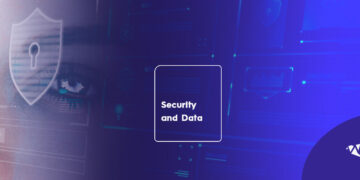Maintaining valuable employees is crucial for business success, and using recognition and rewards are two potent methods to sustain your team’s motivation and engagement.
Employee retention involves more than just offering competitive wages and benefits. It entails establishing a workplace culture that steems and acknowledges remote workers for their diligent efforts and unwavering commitment.
Recognizing and rewarding remote employees also provides an excellent opportunity to demonstrate to them their dedication and contributions have a meaningful impact. By acknowledging and incentivizing your staff, you can cultivate an environment marked by trust, respect, and loyalty, thereby reinforcing their dedication to your business triumph.
This blog post will explore the influence of employee recognition and rewards on retention. Furthermore, we’ll delve into the benefits of incentivizing remote workers and strategies for implementing recognition programs.
Reward and Recognition: How They Impact Employee Retention
Recognizing and rewarding remote workers are pivotal tools for businesses to retain their workforce.
For instance, Greg Gunther points out that employees who feel appreciated for their contributions and are rewarded for their dedication are more likely to remain with their employers. Therefore, you can foster an environment that promotes loyalty and sustains employee retention if you acknowledge and incentivize your teams.
Recognition can manifest in various ways, ranging from verbal compliments to tangible incentives. As highlighted by Bright Ewuru, acknowledging employees’ accomplishments through rewards can also yield benefits, such as:
- Better employee morale and job satisfaction
- Improved productivity and performance
- More revenue for the business
- More accomplished objectives for the company
In essence, employee recognition and rewards play a crucial role in enhancing employee retention. By recognizing and rewarding remote teams’ contributions to your company, you can cultivate a corporate culture based on respect, collaboration, and diversity. In addition, this approach ensures that employees remain driven and devoted to their roles, thereby contributing to higher retention rates.
If you’re keen to dive deeper into the world of employee recognition, we highly recommend checking out this captivating TED talk.
Implementing Recognition and Reward Programs for Remote Employees
Employees are the foundation of business success, and their commitment drives companies forward. The introduction of a recognition and reward program holds the potential to transform your business operations and curtail turnover rates.
Yet, embarking on this journey isn’t a straightforward endeavor. It demands meticulous preparation, strategic execution, and persistent follow-through. Here, we’ll unveil optimal strategies to execute recognition and rewards programs for maximum impact.
Setting Goals for Impact
Embarking on recognition and rewards programs demands a first step: defining your goals and objectives. Delve into what you aspire to accomplish with this initiative. Are you aiming to elevate employee morale, amplify productivity, or slash turnover rates?
As you lay the groundwork, precision is key. Each goal should adhere to the SMART framework: specific, measurable, achievable, relevant, and time-bound. Only then can you meticulously shape your program to align with those well-defined aspirations.
Crafting a Winning Strategy
A well-designed and structured plan is crucial to ensure the success of your recognition and rewards program. This blueprint should comprehensively detail:
- The benchmarks that warrant employee recognition
- The array of possible rewards available
- The systematic path to obtaining these incentives
Moreover, the plan should encompass other crucial elements, such as:
- Budget
- Timeline
- Communication channels
In this endeavor, utmost fairness and transparency must be upheld across all tiers of your company.
Fostering Employee Engagement in Your Program
Elevating employee engagement to a paramount level stands as the linchpin of any victorious recognition and rewards program. A successful approach involves actively engaging remote workers in both program development and planning, granting them a platform to voice their preferences regarding the array of rewards they would find most meaningful.
Simultaneously, effective communication holds the key. Broadcasting the program’s objectives and the benefits it bears for employees is vital. This can be achieved through an array of channels, including:
- Employee gatherings
- Newsletters
- Emails
- Tailored communication methods
This will seamlessly align your program with the expectations and business dynamics of your employees.
Monitoring and Evaluating Your Program
Vital to the sustained success of your recognition and reward program is the consistent monitoring and evaluation of its impact. This practice empowers you to gauge the program’s return on investment and enact any required refinements.
Effectiveness measuring can be realized through many metrics, such as:
- Employee surveys
- Retention and absenteeism rates
- Productivity metrics
To ensure perpetual prosperity, it’s paramount to uphold an ongoing and steadfast evaluation process.
Marking Milestones: Celebrating Your Success
Amid the journey of your recognition and rewards program, don’t overlook the significance of celebrating its accomplishments. When your program accomplishes its envisioned goals, take the chance to recognize the program’s success with your employees.
Celebratory moments can materialize through diverse avenues, like:
- Special gatherings
- Ceremonial award presentations
- A thank-you note
These celebration rituals serve as a catalyst for sustaining employee motivation and fostering an atmosphere of mutual collaboration.
Takeaway
Employee recognition and rewards can significantly influence employee retention. By offering meaningful rewards and acknowledging employees for their contributions, you can foster a positive workplace environment that motivates employees to remain committed to the company.
We lastly suggest you take the time to identify effective rewards, as well as measure the success of their recognition and rewards programs. By doing this, you can ensure that recognition and reward programs are advantageous for both you and your remote workers.
By implementing a well-designed program, employers have the power to cultivate a conducive work environment that fosters employee retention and growth.














